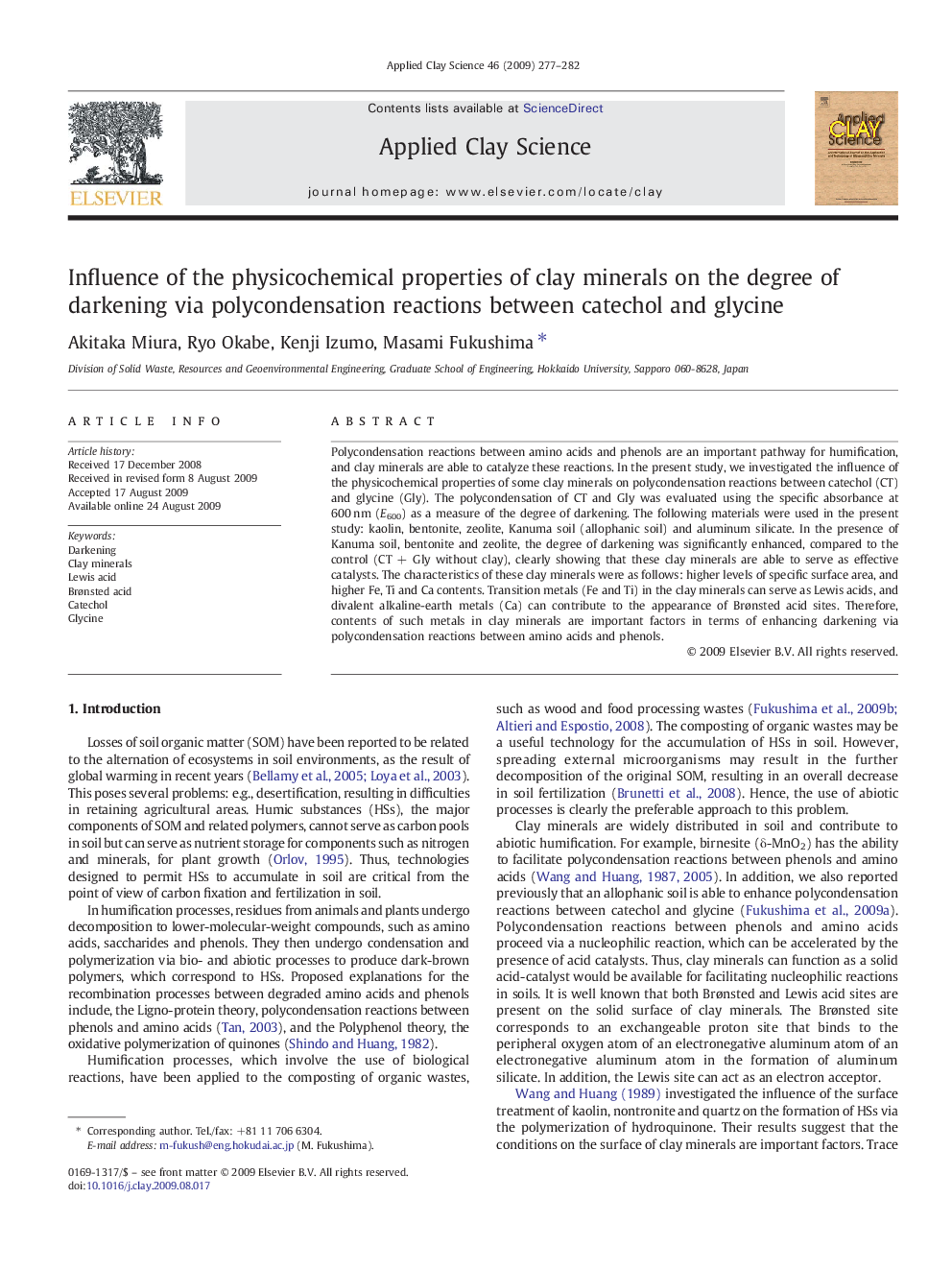| Article ID | Journal | Published Year | Pages | File Type |
|---|---|---|---|---|
| 1695770 | Applied Clay Science | 2009 | 6 Pages |
Polycondensation reactions between amino acids and phenols are an important pathway for humification, and clay minerals are able to catalyze these reactions. In the present study, we investigated the influence of the physicochemical properties of some clay minerals on polycondensation reactions between catechol (CT) and glycine (Gly). The polycondensation of CT and Gly was evaluated using the specific absorbance at 600 nm (E600) as a measure of the degree of darkening. The following materials were used in the present study: kaolin, bentonite, zeolite, Kanuma soil (allophanic soil) and aluminum silicate. In the presence of Kanuma soil, bentonite and zeolite, the degree of darkening was significantly enhanced, compared to the control (CT + Gly without clay), clearly showing that these clay minerals are able to serve as effective catalysts. The characteristics of these clay minerals were as follows: higher levels of specific surface area, and higher Fe, Ti and Ca contents. Transition metals (Fe and Ti) in the clay minerals can serve as Lewis acids, and divalent alkaline-earth metals (Ca) can contribute to the appearance of Brønsted acid sites. Therefore, contents of such metals in clay minerals are important factors in terms of enhancing darkening via polycondensation reactions between amino acids and phenols.
